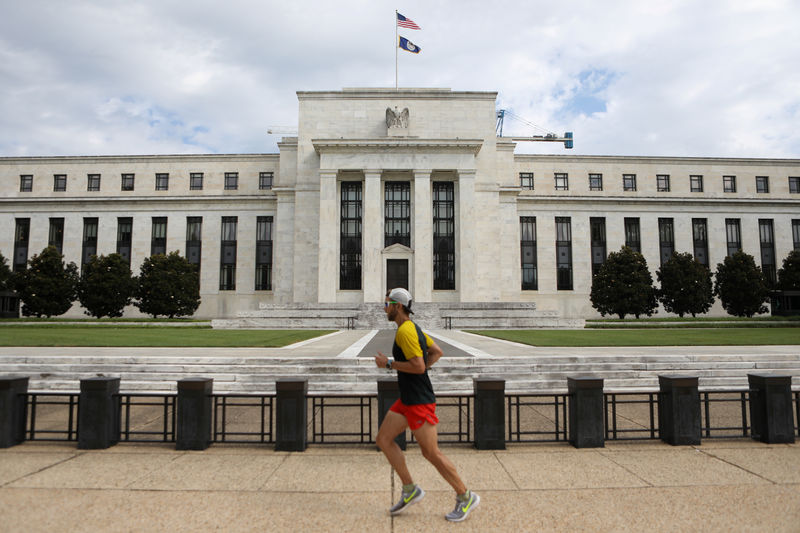By Yasin Ebrahim
Investing.com -- The Federal Reserve raised interest rates on Wednesday for the first time in more than three years and signaled seven rate hikes for this year to bring inflation under control.
The Federal Open Market Committee raised its benchmark rate to a range of 0.25% to 0.5% from a 0%-to-0.25% range previously.
The start of liftoff on interest rates was widely expected as Federal Reserve Chairman Jerome Powell said earlier this month that he would favor a 0.25% hike at the March meeting.
The March rate increase is expected to be followed up with several more hikes later this year, as Fed members have turned increasingly hawkish since December.
The Fed is now forecasting its benchmark rate to rise to 1.9% in 2022, well above the 0.9% forecast in December, pointing to about seven 0.25% rate hikes in total for this year, the Fed’s Summary of Economic Projections showed.
Ahead of the meeting, Wall Street was pricing about six to seven rate hikes for this year.
For 2023, the Fed sees the Federal funds rate at 2.8%, up from its prior projection of 1.6%. The Fed's terminal rate for Fed funds – the rate that coincides with its mandate of full employment and stable inflation – was downgraded to 2.4% from 2.5% previously.
The start of Fed’s rate-hike cycle hike comes as the central bank looks to step up its fight against inflation to ensure elevated price pressures don’t become entrenched.
The core personal consumption expenditures price index, the Fed’s preferred inflation measure, jumped to 5.2% in February, the biggest increase since April 1983.
Many have argued that the central bank has left it too late to tackle inflation, and now finds itself having to play catch up. But tightening too aggressively into an economy that is expected to slow, runs the risk of a recession or even worse, stagflation.
The latest projections from the Fed do little provide comfort against these concerns. Fed members downgraded expectations on economic growth, while the pace of red-hot inflation is forecast to continue.
The economy is expected to grow by 2.8% in 2022, down from a prior estimate of 4%, the estimate for the unemployment rate was unchanged from December at 3.5%, while the pace of inflation is forecast to accelerate to 4.1% from 2.7% previously.
In his press conference that followed the monetary policy statement, Powell pushed back against recession fears. "[W]e feel the economy is very strong and well positioned to withstand tighter monetary policy."
The road to price stability for the Fed will be long and has been paved with more headwinds in the wake of the Russia-Ukraine war pushing prices even higher.
"The invasion of Ukraine by Russia is causing tremendous human and economic hardship," the Fed said in a statement. "The implications for the U.S. economy are highly uncertain, but in the near term the invasion and related events are likely to create additional upward pressure on inflation and weigh on economic activity."
“Powell clearly understands that the Fed is going to really have to focus on inflation now as it's gotten far beyond their expectations,” Dean Smith, chief strategist and portfolio manager at FolioBeyond said in an interview with Investing.com on Tuesday.
“But this isn’t something that you can reduce in a short period … it's going to take a while,” Smith added.
The conclusion of the March meeting also draws the curtain on the Fed’s monthly bond purchase programme, or quantitative easing programme, which played a major role in cushioning the economy from the pandemic impact.
With the QE now in the rearview mirror, the Fed has been weighing options on how to reduce the size of its nearly $9 trillion balance sheet. Powell said "excellent progress" had been made on a plan to shrink the balance sheet, which could be implemented "as soon as our next meeting in May."
"The shrinkage of the balance sheet ... might be the equivalent of another rate increase," Powell added.
